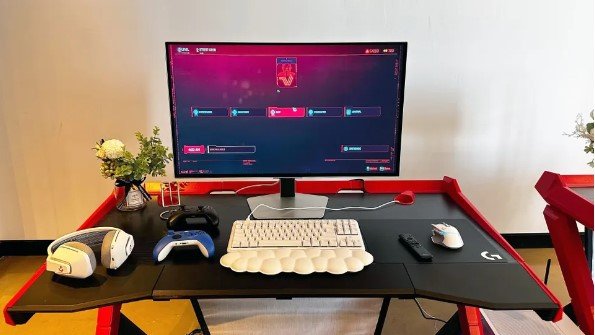Samsung’s Upcoming Glasses-Free 3D Monitor: A Game-Changing Innovation with One Crucial Limitation
In the ever-evolving landscape of consumer electronics, Samsung continues to push the boundaries of innovation. This year, the tech giant is set to release its highly anticipated glasses-free 3D monitor, a product that promises to revolutionize the way we experience visual content. This bold step by Samsung marks a significant milestone in display technology, offering a glimpse into the future of immersive experiences. However, despite the excitement surrounding this cutting-edge device, there is one notable feature that it lacks—a feature that could significantly impact its adoption and overall success.
The Evolution of 3D Technology
To fully appreciate the significance of Samsung’s glasses-free 3D monitor, it’s essential to understand the evolution of 3D technology. For decades, 3D displays have captivated audiences with their ability to add depth and realism to visual content. However, these experiences have traditionally required the use of special glasses, which, while effective, have also been a barrier to widespread adoption. Whether it’s discomfort during extended viewing sessions or simply the inconvenience of wearing glasses, these limitations have kept 3D technology from becoming mainstream.
Recognizing this, Samsung has focused its efforts on eliminating the need for glasses altogether. By leveraging advanced autostereoscopic technology, Samsung’s new monitor is capable of creating a 3D effect directly on the screen. This means that users can enjoy a fully immersive 3D experience without the hassle of wearing any additional accessories. The result is a more seamless and enjoyable experience that has the potential to attract a broader audience.
The Potential of Glasses-Free 3D
Samsung’s glasses-free 3D monitor represents a major leap forward in display technology. It offers a level of convenience and immersion that has never been seen before, making it an attractive option for various applications. From gaming to virtual reality to professional work environments, the possibilities are vast.
For gamers, in particular, this technology could be transformative. Imagine being able to play your favorite games with a sense of depth and realism that was previously only possible with VR headsets. With Samsung’s monitor, this experience can be achieved without the bulkiness of additional hardware. This could make 3D gaming more accessible to a wider audience, potentially reshaping the gaming industry.
In professional settings, the monitor could be a valuable tool for designers, architects, and engineers. The ability to view 3D models and designs in real-time, without the need for glasses, could streamline workflows and enhance collaboration. This could lead to more efficient project development and better communication among team members.
The Missing Feature: Compatibility with Current Standards
Despite the many advantages of Samsung’s glasses-free 3D monitor, there is one crucial feature it lacks—compatibility with current content standards. While the monitor is capable of displaying 3D content in stunning detail, the challenge lies in the availability of such content. Currently, most visual content is produced in 2D, and even though 3D content exists, it is not yet widespread enough to justify a significant investment in a 3D-only monitor.
To fully leverage the potential of Samsung’s new technology, content creators will need to produce more 3D content. However, this presents a chicken-and-egg problem. Content creators may be hesitant to invest in 3D production without a large enough audience, while consumers may be reluctant to purchase a 3D monitor without sufficient content to justify the cost.
Furthermore, the lack of backward compatibility with existing 2D content may limit the monitor’s appeal. While it is possible that the monitor could upscale 2D content to create a 3D effect, this process is unlikely to match the quality of content that was originally designed for 3D. As a result, users may be left with a device that excels in 3D but falls short in its ability to handle the vast majority of current content.
The Road Ahead
Samsung’s glasses-free 3D monitor is undeniably a groundbreaking product. It represents a significant leap forward in display technology and has the potential to change the way we experience visual content. However, its success will ultimately depend on how well it can address the issue of content availability and compatibility with existing standards.
To overcome this hurdle, Samsung may need to work closely with content creators to encourage the production of more 3D content. Additionally, developing a robust upscaling technology that can convert 2D content into high-quality 3D could help bridge the gap.
In conclusion, while Samsung’s glasses-free 3D monitor is an exciting innovation, its lack of compatibility with current content standards is a limitation that cannot be ignored. The success of this product will depend on how well Samsung can navigate this challenge and whether it can encourage the broader adoption of 3D content in the years to come. As with any new technology, the road ahead will be full of challenges, but Samsung’s commitment to pushing the boundaries of what’s possible suggests that the future of 3D displays is bright.


